Learn How To Row, Row, Row A Drift Boat!
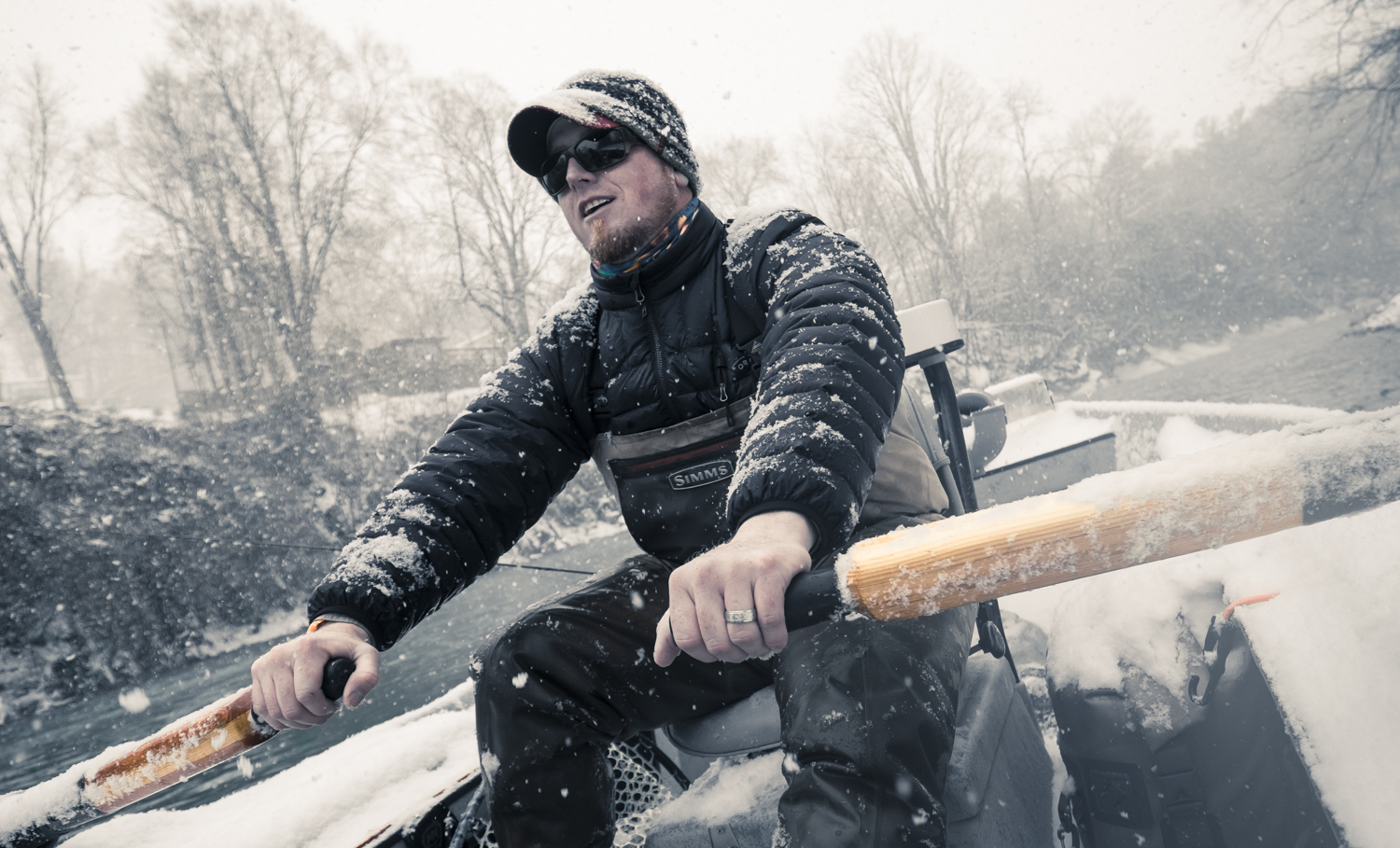
I have to say, I’m a little embarrassed to admit that I have zero experience behind the sticks of a drift boat.
NOPE. ZERO. NADA. NONE.
It’s been nineteen years since I picked up my first fly rod and laid out an ugly cast across Fightingtown Creek, and in nearly two decades I’ve never learned how to row a drift boat. It almost seems sacrilegious to think about it. I’ve been in my fair share of drift boats and rafts along the way, but mainly as a guest or client, so it’s never really been expected of me to take my turn on the oars. I’ve also never owned my own boat or raft so learning to row has never been a necessity. Put my ass in a john boat on a farm pond and I’m good to go, but I’d fare better dropped off in Germany looking for a pair of left-handed chopsticks than rowing a boat down a western river! And we haven’t even thrown fishermen in the boat yet!
On our recent venture to the South Holston River, Louis and Chase Pritchett of American Made Flies were determined to take on the undeniable liability of teaching me how to row down a damn river in the G&G Adipose Flow.
On the second day, during some of the prettiest snow I’ve seen in a long time, we stopped to release a feisty brown trout near the bank. The plan was to fish a particular section of the bank and once we were done, then it would be my turn to get on the oars. A little catch, photo, and release and it was time to shuffle around the Flow so that I could take my place in the middle seat. As intimidating as it was being on a boat that A) isn’t mine and B) with two other anglers and friends that know what they are doing when it comes to drift boats, it was only a few minutes into my maiden voyage that I began to feel how the boat responded to different strokes with the oars, and different currents. Yes, there were some trials and tribulations. Mistakes were made, but It was a great experience. I had two great friends that were patient, and gave me several tips and constructive feedback on how to correct my mistakes. It was a truly awesome day. I was by no means what you would call “proficient” with those oars when my time was done, but I sure do feel more confident in stepping up and getting on the sticks next time around. It’s just one of those things you have to just go and do, and learn from experience. I honestly didn’t put a bend in my rod that day. Those browns weren’t diggin’ what I was throwing down that day, but it didn’t even matter. I could have rowed that boat all day. It was one of those days on the water I’ll never forget.
THINKING ABOUT LEARNING HOW TO ROW A DRIFT BOAT? HERE ARE A FEW TIPS THAT I TOOK FROM MY FIRST EXPERIENCE LAST WEEK THAT MIGHT HELP YOU ON YOUR FIRST DRIFT WITH OARS IN HAND.
Don’t Crash The Boat – This one is important and Numero Uno and pretty obvious! Chances are you will
Read More »Stocking Nymph Patterns in Different Weights
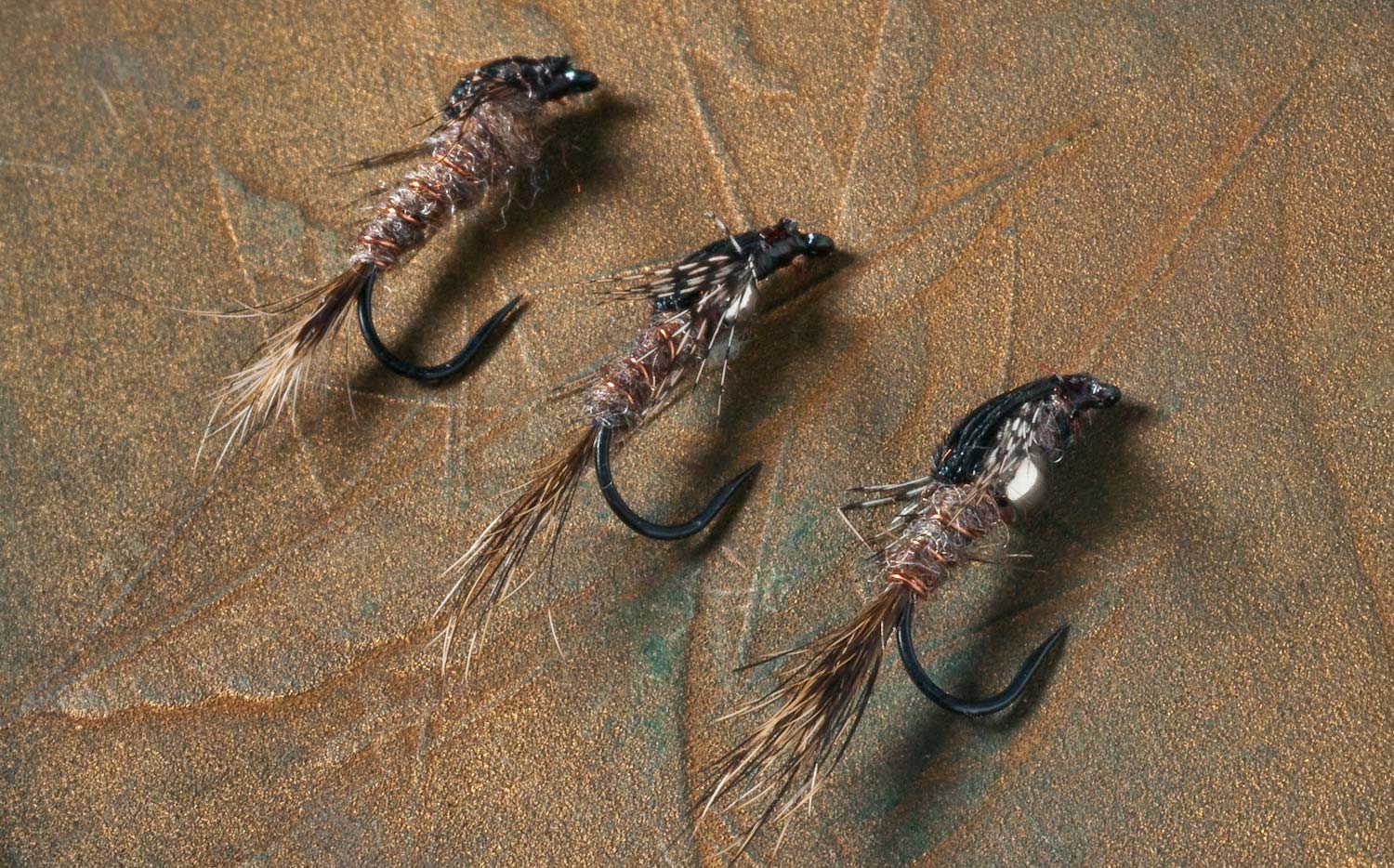
THIS PAST WEEKEND, ON ONE OF MY HOME TROUT WATERS, I WAS FRESHLY REMINDED HOW IMPORTANT IT CAN BE TO CARRY DIFFERENT WEIGHTED VERSIONS OF MY FAVORITE NYMPH PATTERNS DURING TOUGH FISHING CONDITIONS.
The low and gin clear water had the trout extra spooky and cautious. All it took was one wrong move, like my shadow briefly being cast over the water, or a presentation made a little too hard, and the trout ran for their lives like they were being chased by a pack of starving otters.
I use split-shot most of the time with my nymph rigs to get my flies down in the strike zone. It works great for me almost all of the time, but keep in mind that the extra weight added by them, also increases the noise made when presenting your flies on the water. Since I had low and flat water conditions, it wasn’t necessary for me to use them to get my flies down for most of the water anyways, except for the deeper pools. I love my Thingamabobbers but I had to substitute them for small stick-on foam strike indicators to keep my presentations extra quiet. I could have used a dry fly as an indicator but it would have called for me to constantly adjust my dropper length to keep my flies drifting in the preferred depths from one fishing spot to the next.
For the most part, the trout were congregated in the deeper pools, buckets and troughs, where the most water was found, but there were also multiple spots where I found trout holding in shallow, slow moving water located near cover. These places required unweighted or lightly weighted versions of my nymph patterns to get a good drift through the target water. My problem, was that the trout were favoring hares ears and I was slap out of unweighted versions of them. My weighted versions worked fine in the deeper water, but they didn’t work so well in the shallow water. I managed to catch a few fish on soft-hackles and pheasant-tails in the shallow water, but I had to really be precise with my presentations to get them to eat. If I would have had more unweighted/lightly weighted hares ears on hand, I’m confident I could have landed more fish in the areas where the trout were holding in shallow water.
For some reason, the trout were willing to move much further to eat a hares ear than my other nymph patterns. I’ve learned over the years, that every fishing day is different and unique. Some days the trout will be opportunistic and will eat a wide selection of fly patterns, while other days, even on water that is so called “infertile”, where there’s low bug densities, trout may choose to go against their opportunistic feeding habits and flat out prefer one food source or fly pattern over the rest. It doesn’t make a lot of since, and it goes against what most fly fishing authors teach, but then again, you alway have to add fishing pressure into the equation. I think this was
Read More »Don’t Get Stuck in a Fly Fishing Rut
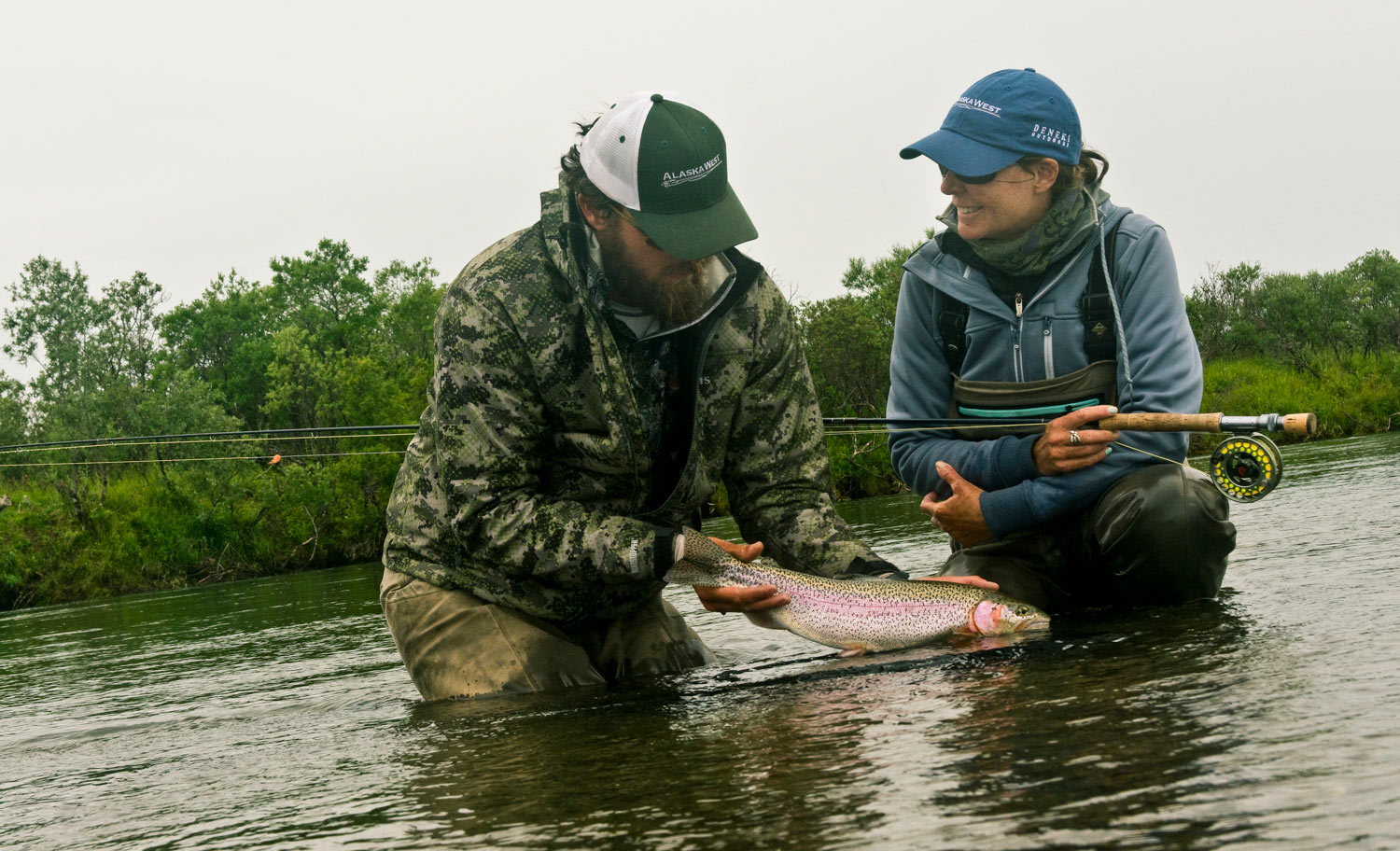
I see this simple mistake keep anglers from catching fish with startling regularity.
I was invited on a float trip recently and witnessed a remarkably common pattern, which may have greatly limited the number of fish brought to the boat. My fishing partner and I were told to arrive empty handed. That’s an unusual request for a day of fishing, but we were being hosted by a manufacturer who wanted us to test new products, so we complied. Well, almost. I’ve seen too many tough days on a drift boat to come aboard without an ace in the hole. I grabbed a pill bottle and dropped four trusted streamers inside. As long as I had a rod and line, I could make a day out of that.
When it came time to fish we were graced with beautiful weather, apparently for the first time in over a week and our guide was stoked. He had been eagerly awaiting the golden stone hatch and was confident that today was the day. He outfitted both rods with big dry flies and we pounded the bank. It seemed like a winning plan but after an hour and a half of drifting some very tasty water we were still fishless.
I clipped off my fly and tippet and tied on a streamer.
I didn’t get any attention at first but after a pattern change
Read More »Flats Boat Etiquette, Being A Good Fishing Partner

The reception to my last fly fishing etiquette post was so positive I thought I’d dive in a little deeper.
Flats fishing from a boat is a team sport. Whether you’re out fishing with friends, out with a guide or on a trip to a fishing lodge, you’re never out on the boat by yourself. Usually you are sharing your fishing time with another angler. It may be a friend, a spouse or a complete stranger but regardless of who you’re fishing with, one thing is the same. How you behave on the boat affects their fishing experience.
I’ve seem some pretty thoughtless things done on flats skiffs. Usually out of ignorance and often ending in embarrassment. Neither angler, or the guide for that matter, needs that. With that in mind, here are a few simple rules to help you be a good boat buddy.
BE QUIET!
Rule number one. First, last and always, be quiet. Saltwater fish are easily spooked and the noise of cooler lids, camera cases and beer bottles banging against the hull travel for great distances in the water. Don’t be a busy bee. Your buddy’s fishing time is not your chance to get a few things done around the boat. Be still. Rocking the boat moves water and fish can hear it. Keep your shoes off. Sock feet are quiet feet. Be obsessively quiet. You never know when you’re about to see the fish of a lifetime.
DON’T BE A BOW HOG
Share the fishing time fairly. It’s not fair to stay on the bow all day, even if you’re not seeing fish. The worst is when two anglers of very different skill levels get paired together. All too often the better angler spends the day watching his partner blow shot after shot. When it’s his turn to fish, he gets up, catches his fish in five minutes and is back in the chair for an hour.
There are some “rules” for lack of a better term. They vary a little and guys who fish together often sometimes have their own rules but they are all something like this.
Read More »Douse The Flash
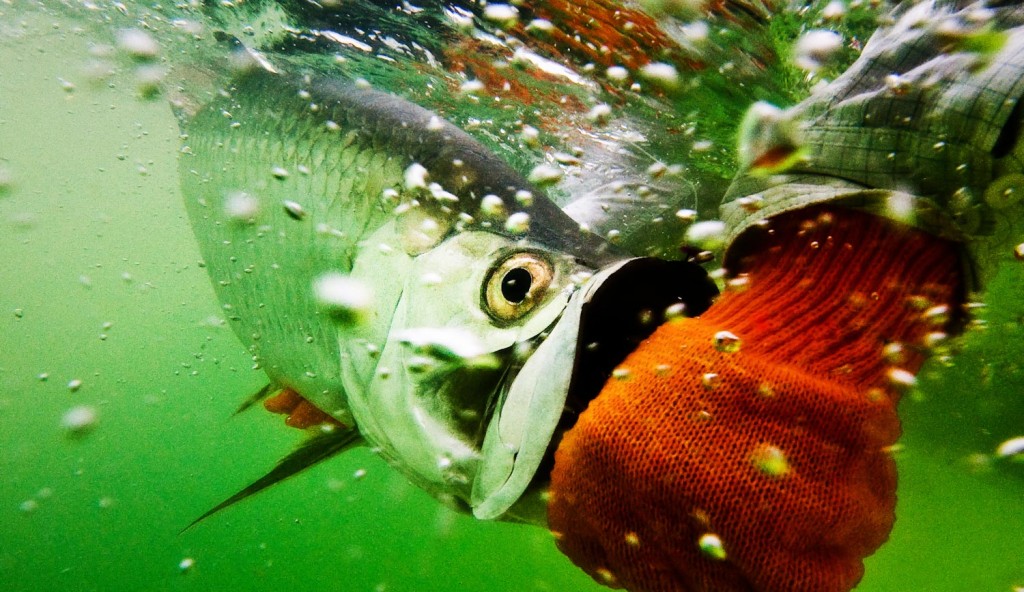
All waterproof point and shoot cameras have a built-in flash, but is it your friend?
Well, sometimes. I’m a big believer in fill flash and use it a lot myself but when the camera drops below the surface of the water it can be a liability. When pros use flash under water the they take the flash off to the side, well off the lens axis, and trigger it remotely. It’s a great technique and works well but it’s impossible to pull off with a point and shoot.
Here’s the problem with having your flash on the camera.
It’s remarkable how much
Read More »Demystifying The Hex Hatch
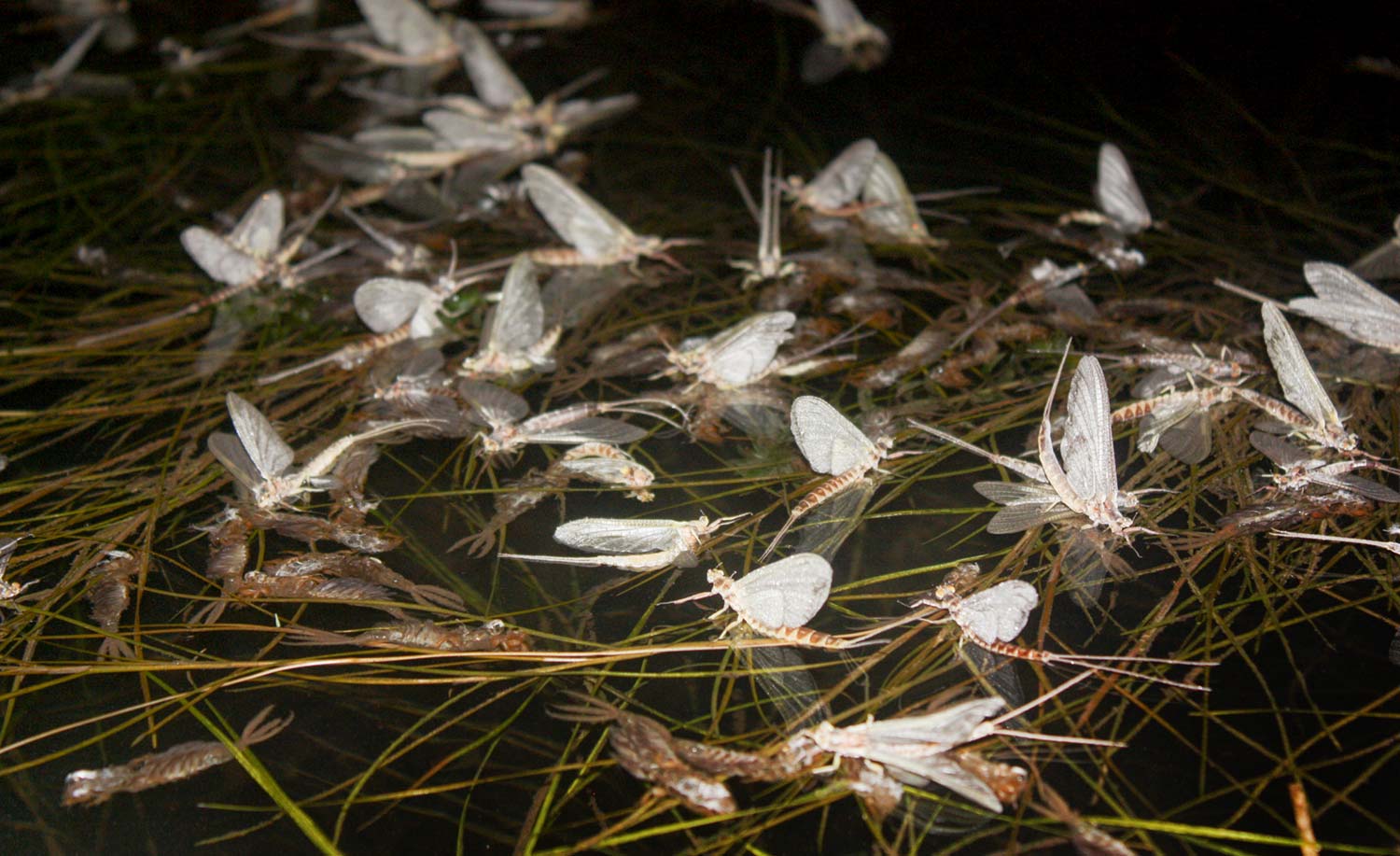
By Jason Tucker
I listened to a fishing podcast the other day in which both the hosts discussed the famous Hexagenia mayfly hatch.
Despite admitting that neither of them had ever fished the hatch, both opined that the Hex hatch was probably overrated. Yeah it has a reputation for big bugs, big hatches and big fish, but experiencing it must be akin to sighting a cougar east of the Mississippi.
IF YOU HAVEN’T EXPERIENCED A GOOD HEX HATCH ON A TROUT STREAM IN THE UPPER MIDWEST AND GREAT LAKES REGION, PERHAPS YOU’RE WONDERING IF IT REALLY LIVES UP TO THE HYPE. IS IT WORTH TRAVELING TO EXPERIENCE? SHOULD IT BE ON MY BUCKET LIST? IS IT MORE HYPE THAN REALITY? HOW DO I GET IN ON THE ACTION WITHOUT WASTING TIME AND MONEY?
I’m here to tell you that experiencing the Hexagenia limbata hatch is definitely worth it, and I’m going to give you the knowledge you need to be successful. It is worth seeing even if you don’t fish. It’s one of those rare experiences in which you experience animal numbers that are normally associated with the Serengeti or caribou in the Canadian tundra, or mass bird migrations. Just because they are insects makes it no less magical; in fact it is more so if you are a fly angler. There is a beauty and grace to the bugs themselves, and watching a river of bugs flying upstream to mate, or a swarm so dense you can’t see through it, or their dance over the water as the females fly upward and the males pursue is all magical in itself, a privilege for anyone to witness.
Hexagenia limbata mayflies occur across North America and I’ve experienced them everywhere from Labrador to Ontario to Washington State (where we got in on a stellar lake hatch) to the Deep South where I live, but the best place to fish this hatch is probably Northern Michigan. Wisconsin, Pennsylvania and New York (and I’m sure other Northeast states) all get hatches, but no place, not even Michigan’s Upper Peninsula, has a reputation for the Hex hatch like Northern Michigan, starting with Lake Michigan tributaries running up the west side of the state, up to its zenith on the Au Sable and Manistee rivers, and north to the tip of the mitt as we call it.
The first thing you need to know about Hex mayflies and brown drakes is that they’re more of a lake dwelling insect than a stream dwelling insect.
The most massive hatches occur on lakes like Lake St. Clair, Lake Erie and even the Mississippi river, all of which throw off such dense clouds of mating insects each season that they show up on weather radar. Around Lake St. Clair I’ve seen “drifts” of them piled up a couple feet deep smelling like rotten fish. They pile up so deep under street lights that they cause auto accidents because they make the roads slick. Unlike much of Wisconsin, or Michigan’s UP, which have limestone, sand or granite bedrock, Northern Michigan is glacial moraine, a giant pile of gravel, sand, clay and marl left by Ice Age glaciers. Hex and brown drake mayfly nymphs are burrowing insects that require muck and marl to burrow in. The bottoms and margins of the inland and Great lakes in this area are the perfect habitat. Trout streams with a
Read More »Isonychia Nymph Patterns – 4 Proven Imitations
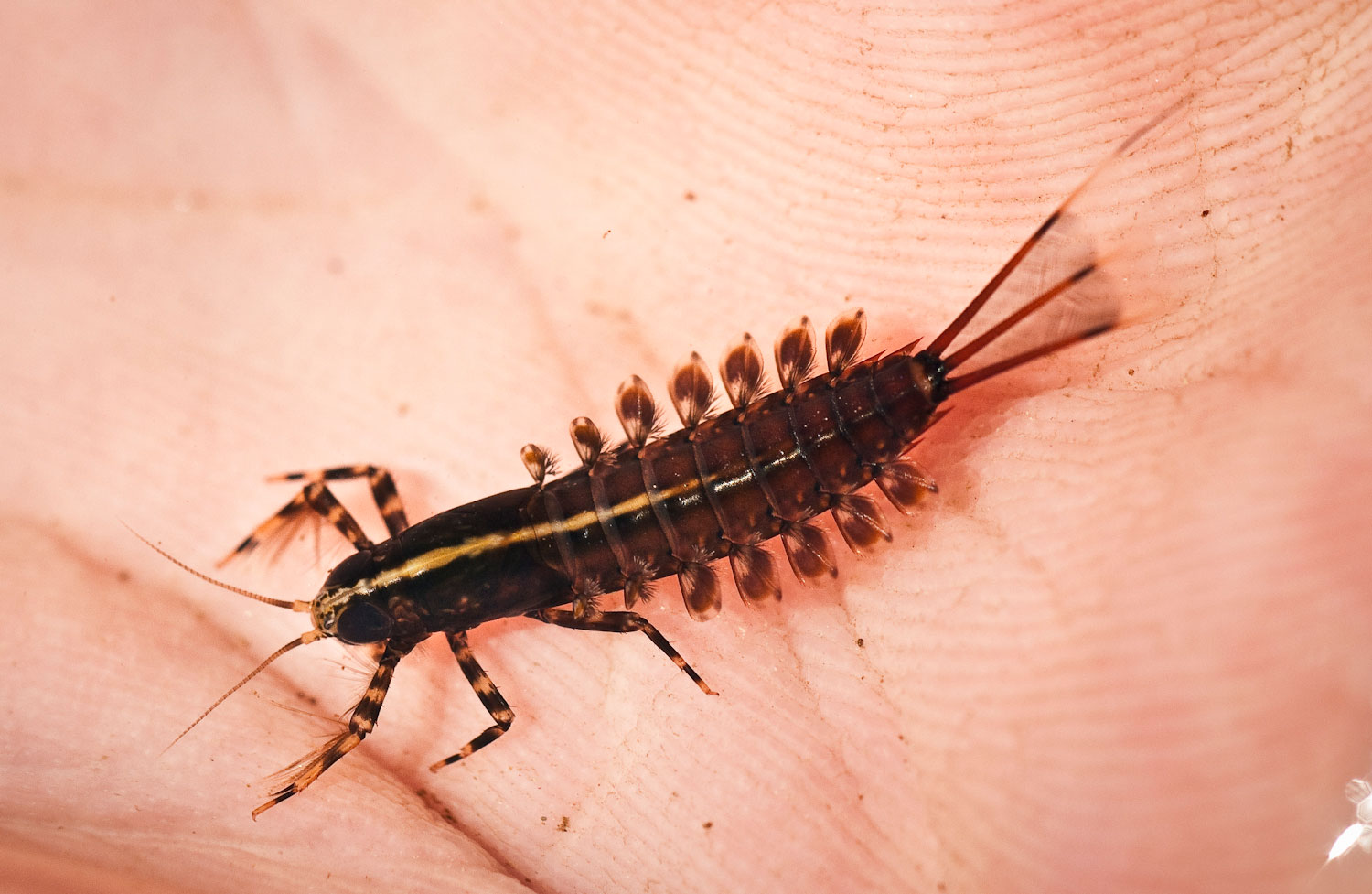
The Isonychia Nymph is a pattern that should be carried in the fly box of every traveling fly angler. Although these aquatic mayflies do not inhabit all streams in great density, where they are found in abundance, they are shown great favoritism by foraging trout who will often key in on them exclusively. The Isonychia usually hatches during the summer months, with some locations in the United States and abroad, returning a second time during the fall season.
These beautiful mayfly nymphs are olympic class swimmers, and fly tiers should try to tie their Isonychia fly imitations with materials that breath and move naturally in the water to mimic this trait. Furthermore, twitching and swinging Isonychia nymph patterns during the drift, is highly suggested to help attract attention and trigger strikes by trout. The light colored stripe, that runs down the back of most Ishonychia nymphs, is the most recognizable feature that tips fly anglers off to the correct classification of these nymphs. That being said, not all species carry the white stripe in such flamboyancy, so it’s best to sample your local streams and rivers when tying your own imitations.
Below are 4 Isonychia nymph patterns that I’ve used in the past with great results. Most Isonychia nymphs measure in the size 10-12 hook range, but most fly fisherman agree it’s always a good idea to stock a couple different sizes in your Isonychia fly patterns to help insure you’ll be able to accurately match the bugs on the waters that you may find while fly fishing.
Read More »Dunnigan’s Panty Dropper Nymph
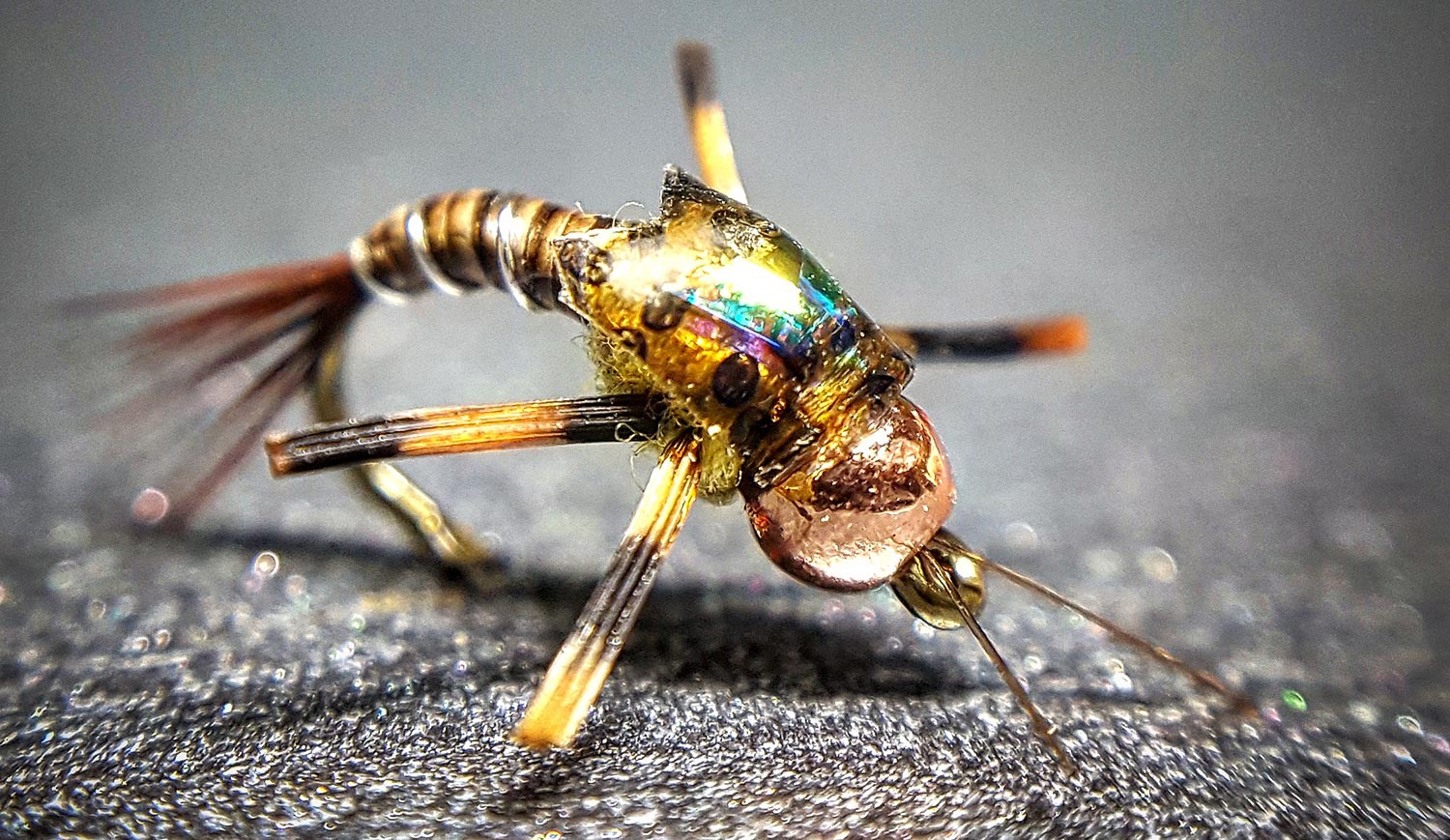
By Bob Reece Dunnigan’s P.D. Nymph is a trout magnet. As I’ve moved further into my fly tying and fishing journey, I’ve been blessed to meet some outstanding people. Casey Dunnigan happens to be one of them. A skilled welder by trade, his ability to create with his hands is evident in his fly tying as well. Casey’s inspiration for designing his Panty Dropper (P.D.) nymph pattern, came as a result of extensive time collecting live specimens. He wanted a highly accurate P.M.D. imitation that combined realistic traits, like the fibbett antennae, with enough subtle flash to set it apart from the underwater mix. The enlarged wing case of the pattern is perhaps its most dynamic characteristic. This element was included to parallel the distended state of that feature in naturals as they near emergence. I was lucky enough to get my hands on this pattern a few years ago when I traded Casey a dozen of my Beefcake Beetles for equal amount of his P.D. nymphs. The dozen that I received were size sixteens. Casey typically ties and carries the range of eighteen to fourteen. It was late summer when we made this exchange. In the weeks that followed I spent several days on a few of my favorite steams throughout Wyoming and Colorado. I was blown away by the effectiveness of this pattern as it produced multiple days of more than thirty fish to my net. Every once in a while a pattern comes along that truly sets itself apart from others. I firmly believe Dunnigan’s Panty Dropper to be one of those. This highly accurate imitation turns fish at level that I’ve seldom seen. Whether you tie or buy, take the time to add this bug to your nymphing arsenal this year. Watch this video … Continue reading
Read More »Can Fasting Make You A Better Angler?
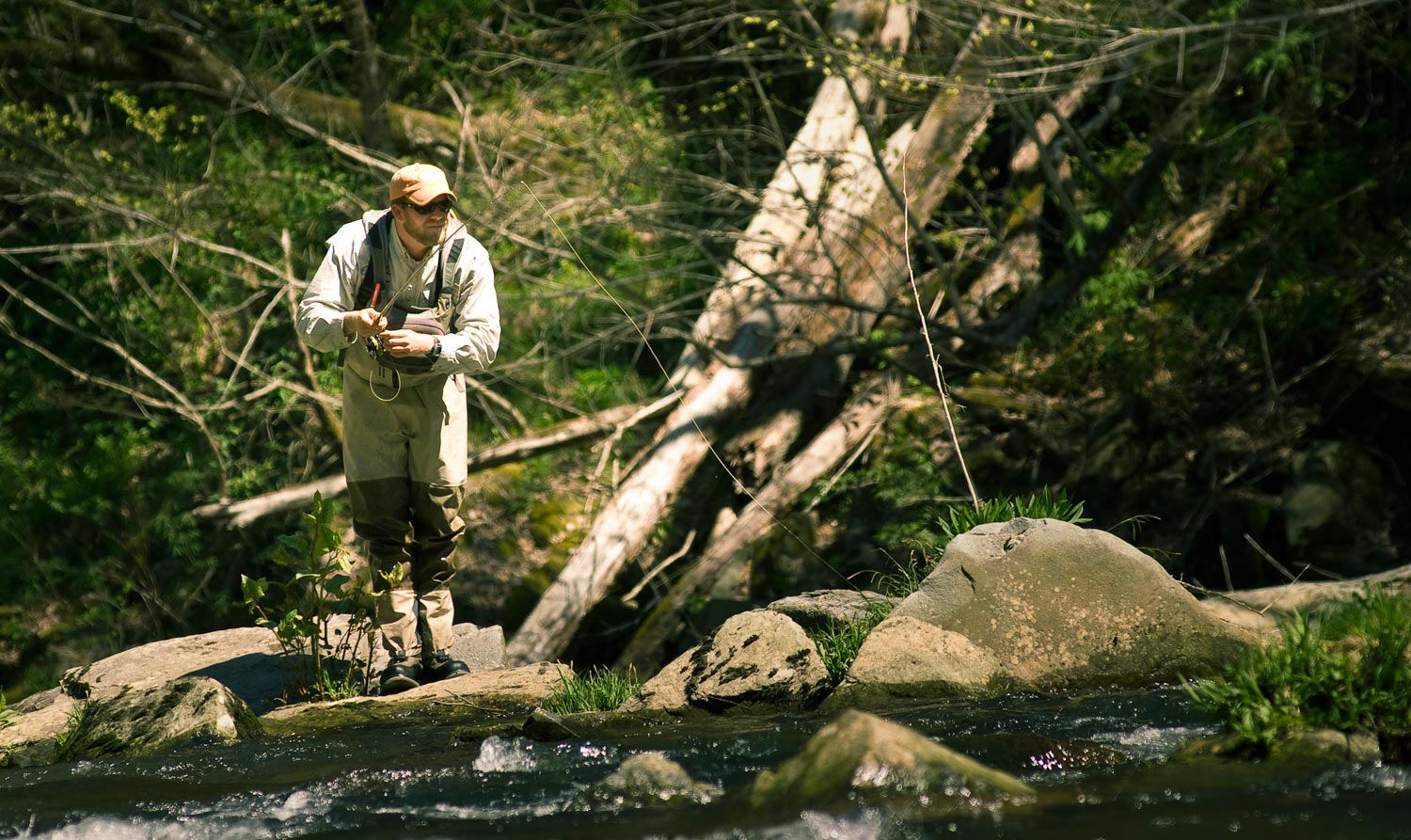
Science is finding evidence that the ancient practice of fasting offers a host of mental health benefits.
I’m starving. Quite literally. I’ve been on a pretty intense diet recently and as of today have lost 55 pounds in a little over four months. There are many health benefits to keeping that weight off but I really believe it’s helping me be a better angler, if for no other reason than I can hike to better water. In all seriousness though, I’ve seen a difference and it got me doing a little research. It seems I’m not alone in the idea that fasting changes your mental performance.
My initial theory was this. If I am hungry when fishing, my natural predatory senses could be enhanced. My body needs food and my mind could be sharpening my senses to help me provide it, helping me spot fish and focus on catching them. After doing some reading, I think there’s merit in that idea but there may be more going on.
Studies have shown that fasting can finding improvements in mood, mental clarity, vigilance, a sense of improved well-being, and sometimes euphoria. An interesting article from “Mind The Science Gap” gets into some of the physical details.
“The mood-boosting effects of fasting may be an evolutionary adaptive mechanism for periods of famine. In other words, when food is scarce our bodies release chemicals to help protect our brains from the negative effects. These chemicals can put us in a good mood–but, as you know if you have skipped a meal or two, it takes a few days. During the first week of fasting, the body begins to adapt to starvation by releasing massive amounts of catecholamines including epinephrine (adrenaline), norepinephrine, and dopamine as well as gluco-corticoids, steroid hormones involved in regulating the immune response and glucose metabolism. All of these chemicals are also released during the infamous ‘fight or flight’ response. After a while, our body responds to this stress through a boost of feel-good and protective chemicals.” -http://www.mindthesciencegap.org
There is also research which suggests that these chemical changes in the brain help in the long term to
Read More »12 Tips for Spotting More Bonefish
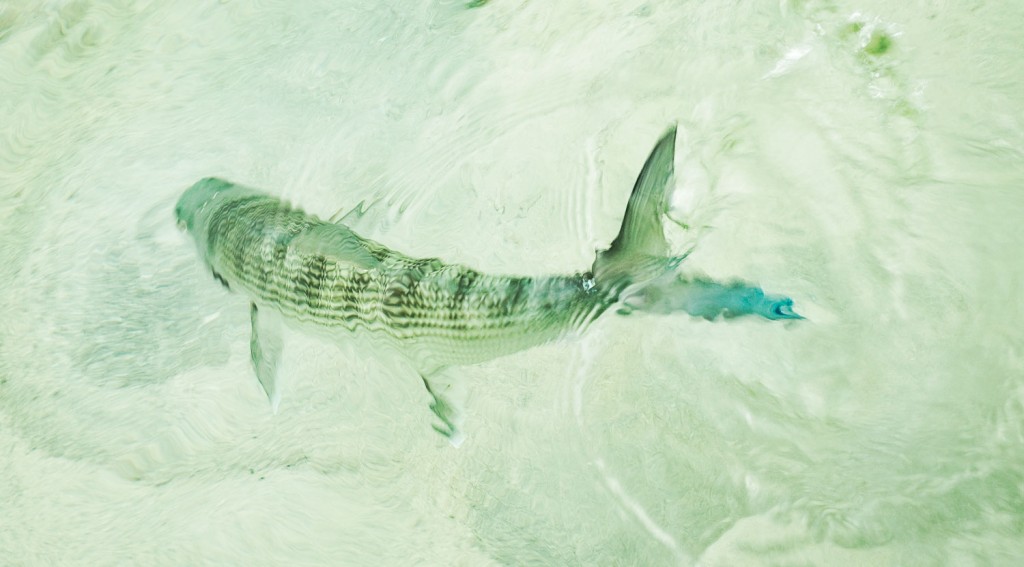
So you want to catch a bonefish?
To catch a bonefish, one must first see a bonefish, and there’s the problem. Bonefish are nearly invisible as any living creature. Their camouflage is almost flawless. Their sides are as bright as a mirror and reflect their surroundings perfectly. If the bottom is light, the fish is light. If the bottom is dark, the fish is dark. It can be maddening.
The problem is compounded for the angler who is making the transition from trout fishing to flats fishing. The method of spotting fish is completely different. In fact it’s almost opposite. To find a trout you identify the likely holding water and stare into that spot, waiting for the window to open so that you can glimpse a head or a tail. But trout are holding still in moving water. Bonefish are always on the move. If you stare through that window you’ll miss the show.
I can remember standing on the bow, listening to my guide’s voice become tense, then frustrated. “He’s right there Man, forty feet, right in front of the boat.” “You can’t see the fish, Man?” It will test your self confidence, make you wonder if you know anything about fishing.
With time, the lights turn on and you start to understand the subtle signs of life that you’ve been missing. You learn how to look for fish. Spotting bonefish never gets easy but it become doable. With time, a good pair of polarized glasses and a little patience from your guide, the bonefish will reveal himself.
HERE ARE TEN TIPS TO HELP.
1. Keep your head on a swivel
There are some rules for how fish move on the tide, but bonefish don’t care much for rules. They’re like kids, they mill around, get distracted, turn and stop suddenly. They could be anywhere on the flat. Keep scanning the water. The closest bonefish may be behind you.
2. Don’t get tunnel vision
It’s easy to anticipate where you will see fish. You can find yourself staring at a small piece of water trying to make fish appear. This tunnel vision can be its worst when your guide is calling out a fish. You may be looking ten feet to the left of the fish and never see it. Keep your eyes relaxed and look at the big picture. See the forest, not the trees.
3. Search the glare
The surface of the water reflects the sky and one part of the sky is always lighter than the other. That means that there is almost always part of the water where you can see well and a part where you see mostly glare. The natural tendency is to spend your time searching the water where you can see well but this is not the most effective method. Scan that water quickly, then slow down when you scan the glare. That will help keep you from missing fish.
4. Tilt your head
Polarized sun glasses work with the angle of the light. The angle of the light is always changing but your glasses stay put. If you are struggling to see
